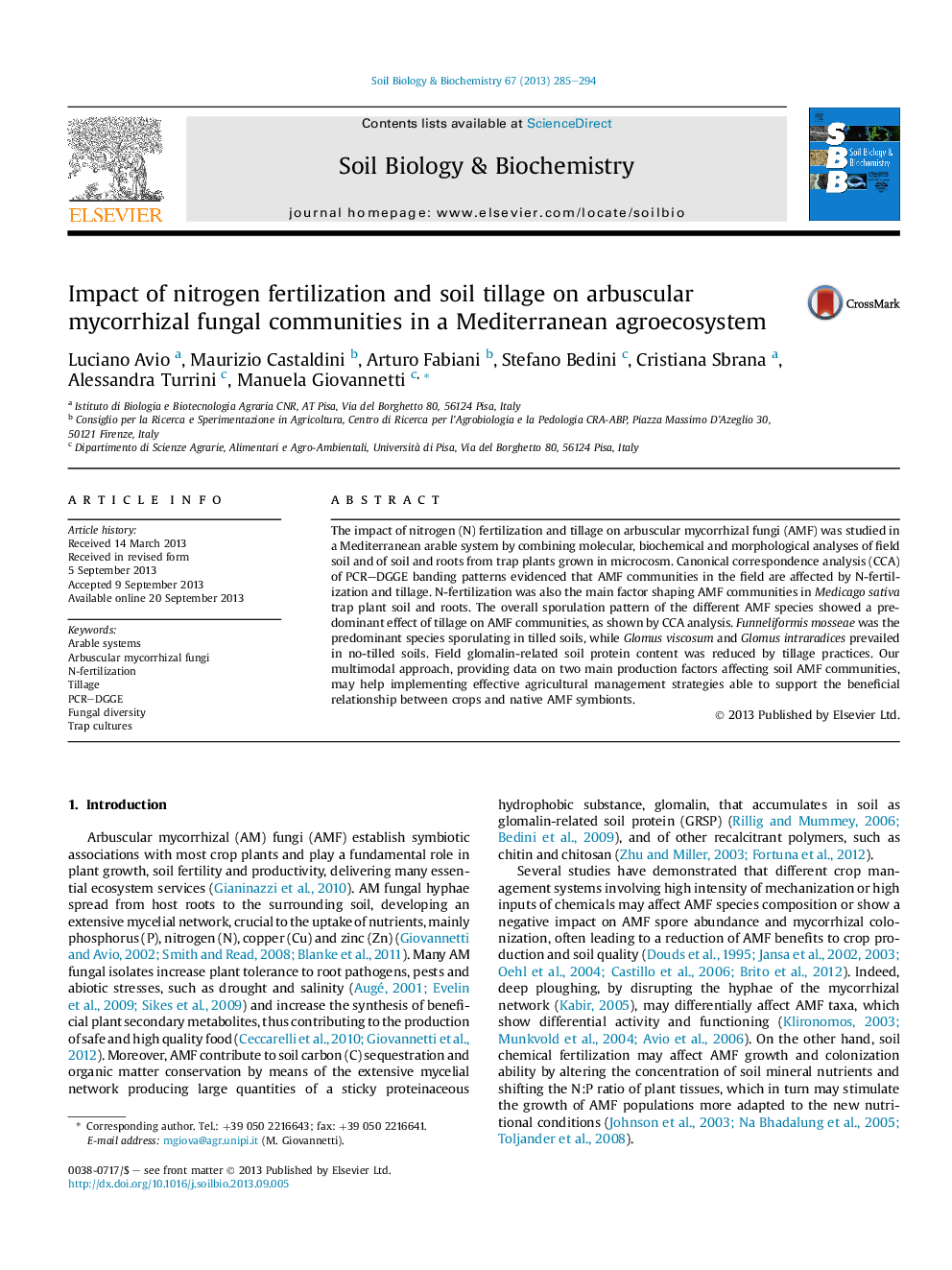| Article ID | Journal | Published Year | Pages | File Type |
|---|---|---|---|---|
| 8365164 | Soil Biology and Biochemistry | 2013 | 10 Pages |
Abstract
The impact of nitrogen (N) fertilization and tillage on arbuscular mycorrhizal fungi (AMF) was studied in a Mediterranean arable system by combining molecular, biochemical and morphological analyses of field soil and of soil and roots from trap plants grown in microcosm. Canonical correspondence analysis (CCA) of PCR-DGGE banding patterns evidenced that AMF communities in the field are affected by N-fertilization and tillage. N-fertilization was also the main factor shaping AMF communities in Medicago sativa trap plant soil and roots. The overall sporulation pattern of the different AMF species showed a predominant effect of tillage on AMF communities, as shown by CCA analysis. Funneliformis mosseae was the predominant species sporulating in tilled soils, while Glomus viscosum and Glomus intraradices prevailed in no-tilled soils. Field glomalin-related soil protein content was reduced by tillage practices. Our multimodal approach, providing data on two main production factors affecting soil AMF communities, may help implementing effective agricultural management strategies able to support the beneficial relationship between crops and native AMF symbionts.
Related Topics
Life Sciences
Agricultural and Biological Sciences
Soil Science
Authors
Luciano Avio, Maurizio Castaldini, Arturo Fabiani, Stefano Bedini, Cristiana Sbrana, Alessandra Turrini, Manuela Giovannetti,
